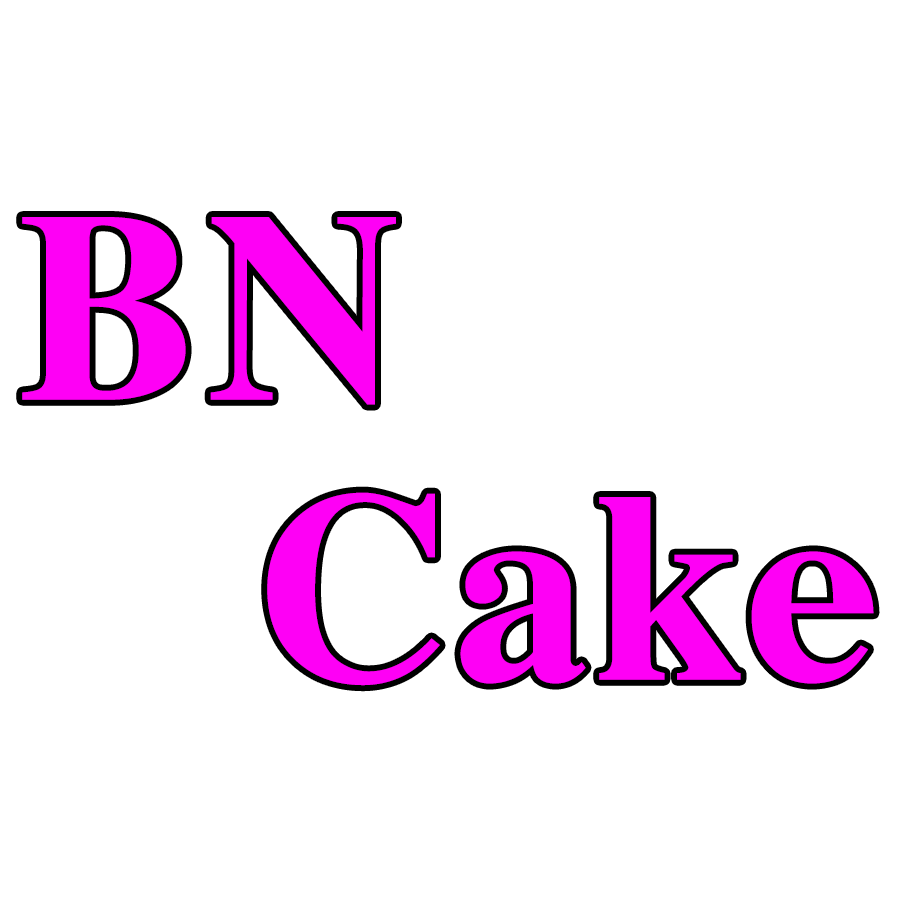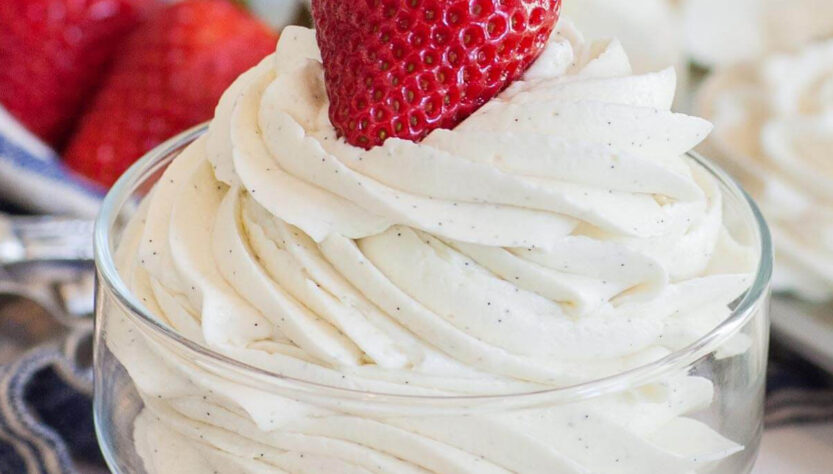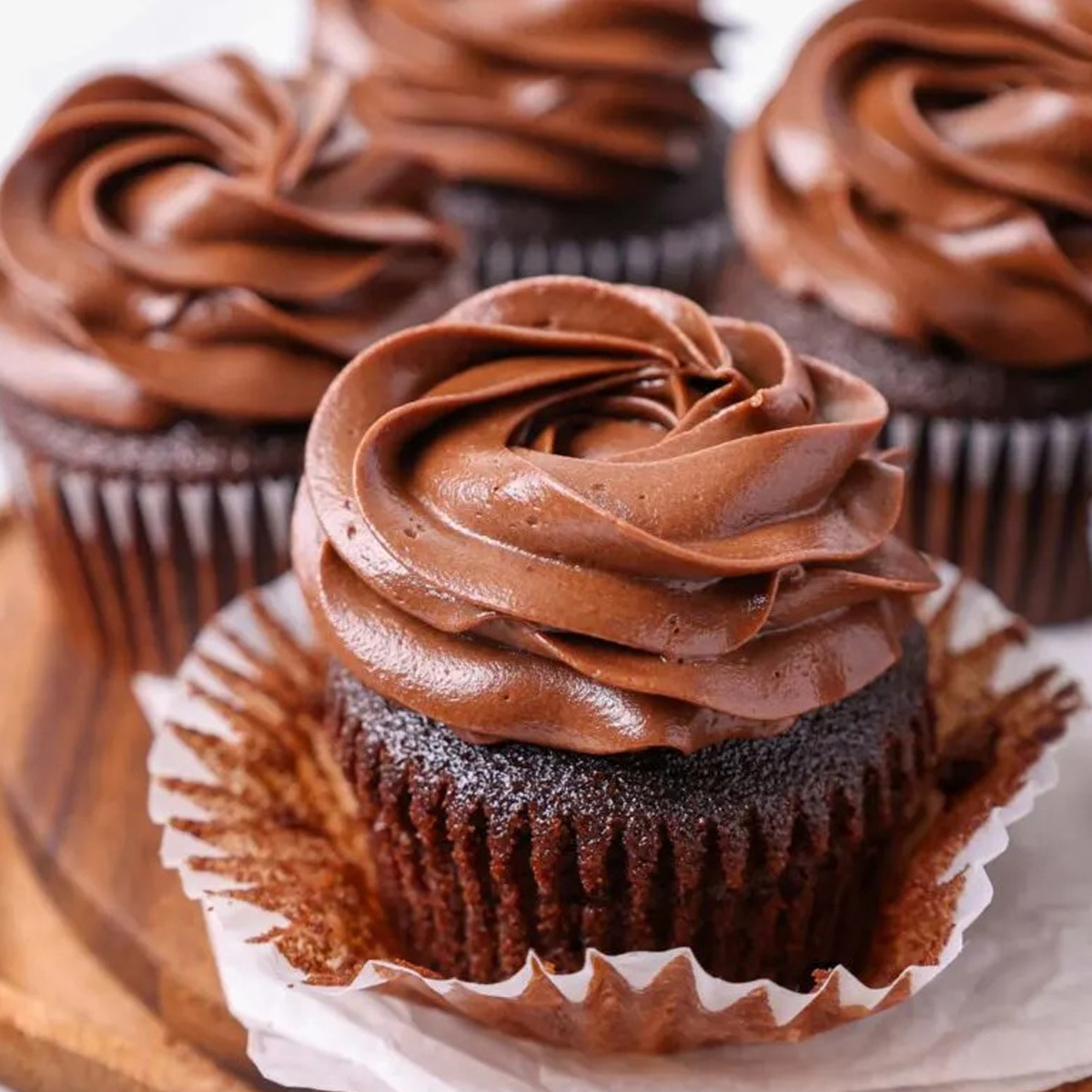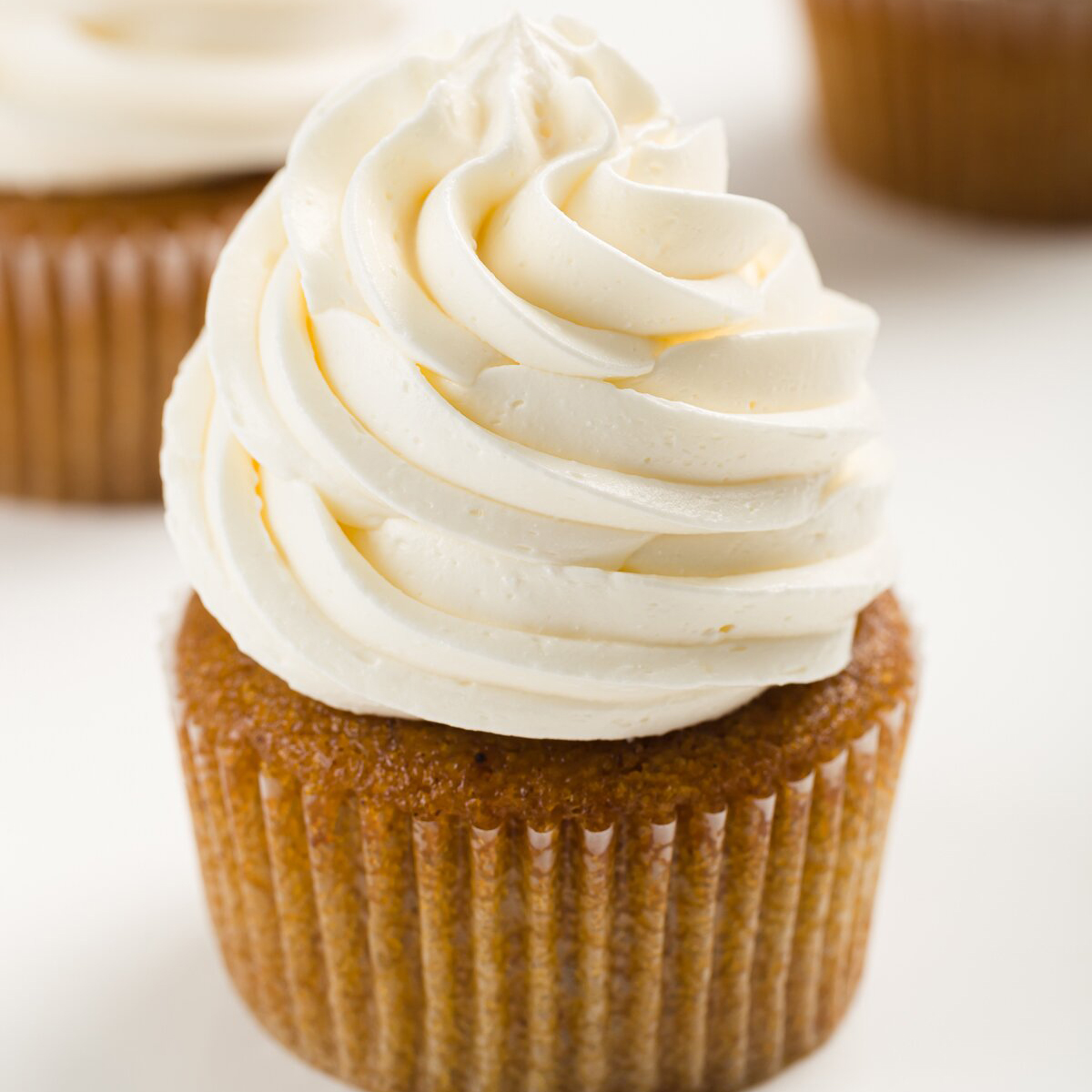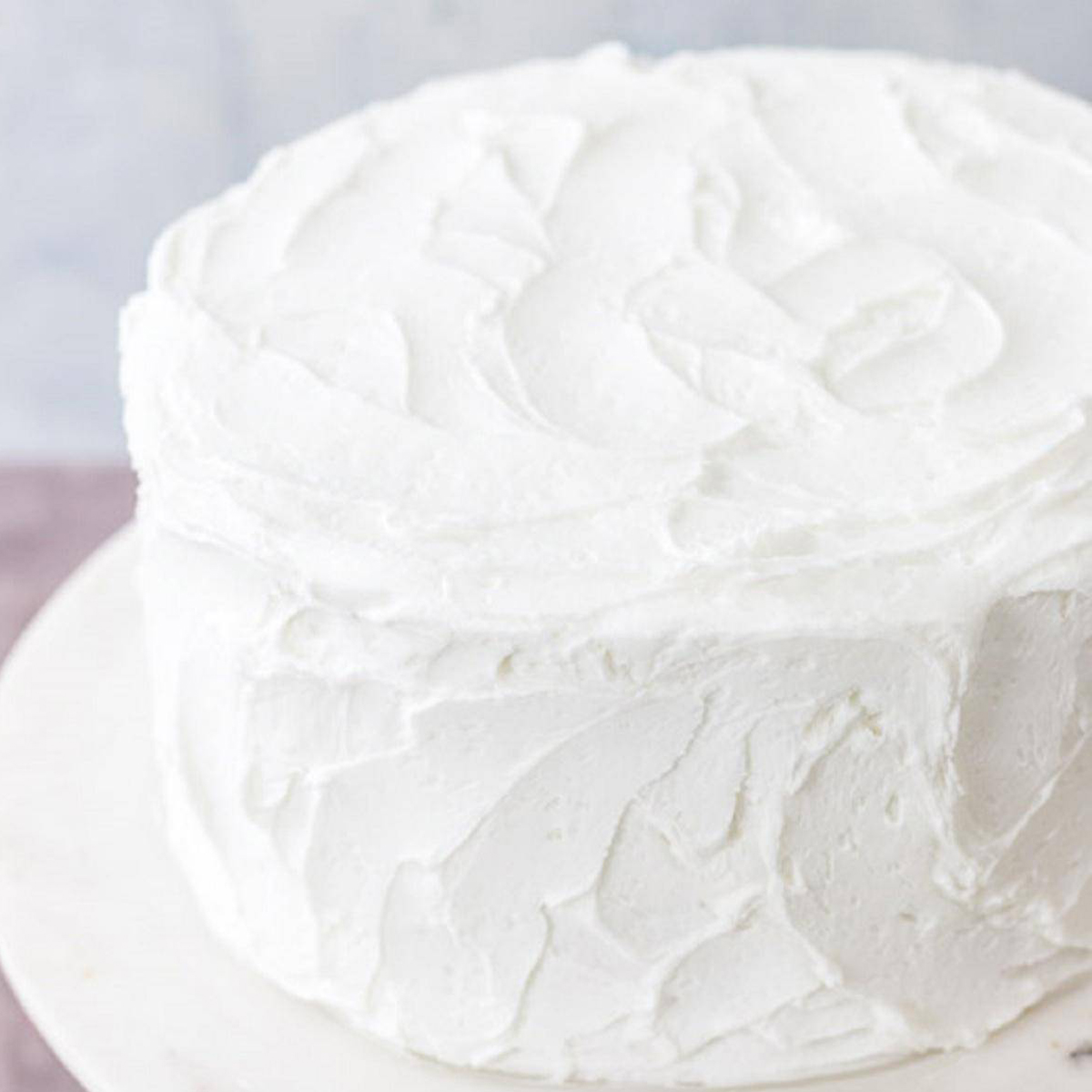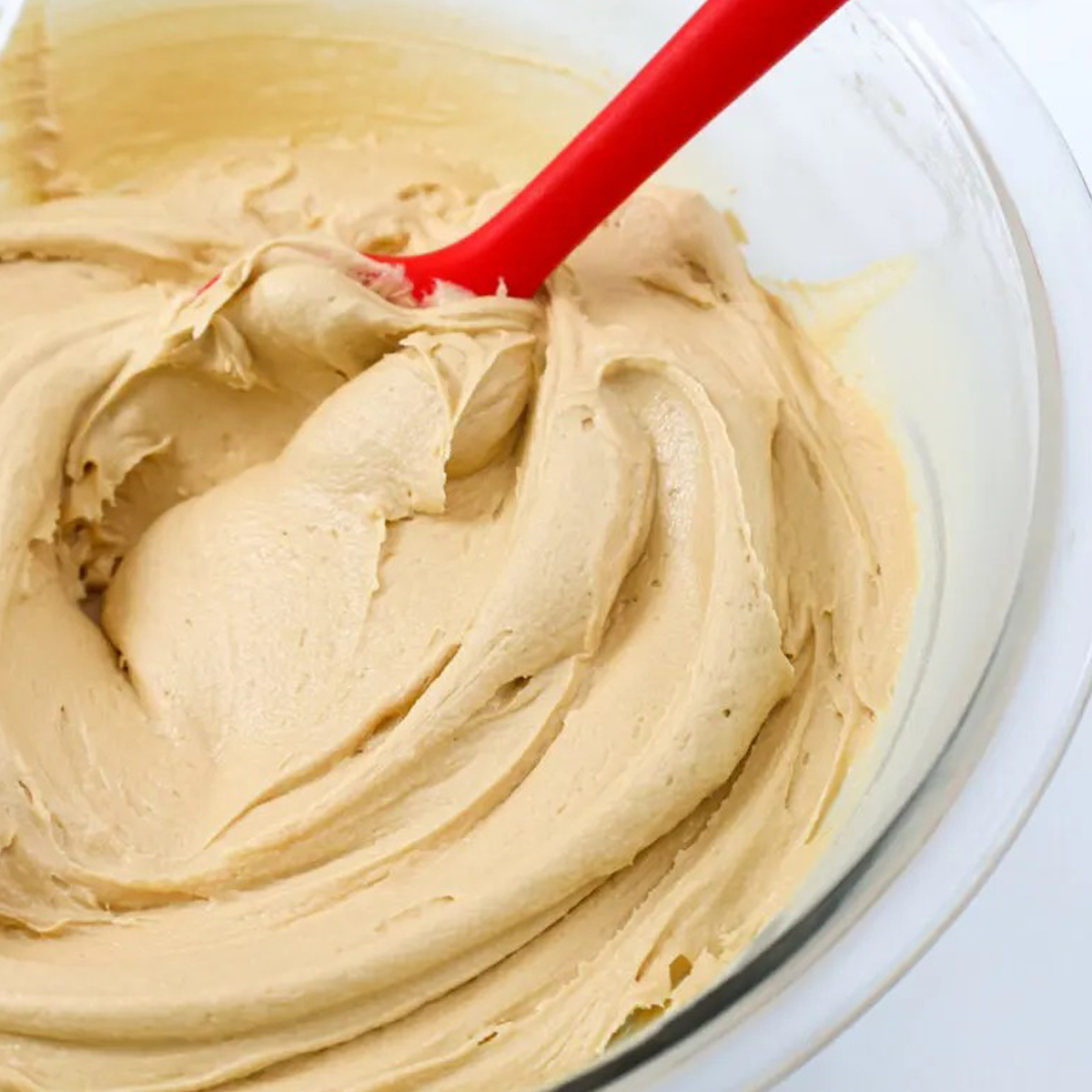German Buttercream is a delectable and luxurious frosting that is popular among bakers and dessert enthusiasts alike. This rich and velvety buttercream is made by combining a custard base with generous amounts of butter, resulting in a luscious texture and a delightful balance of sweetness. Unlike its counterparts, such as American Buttercream or Swiss Meringue Buttercream, German Buttercream is uniquely custard-based, imparting a subtle richness and a smooth, creamy finish. Whether used to frost cakes, cupcakes, or fill pastries, this indulgent buttercream is sure to elevate any sweet treat to a whole new level of deliciousness. Get ready to savor the enticing blend of flavors and experience the magic of German Buttercream in your next baking adventure!
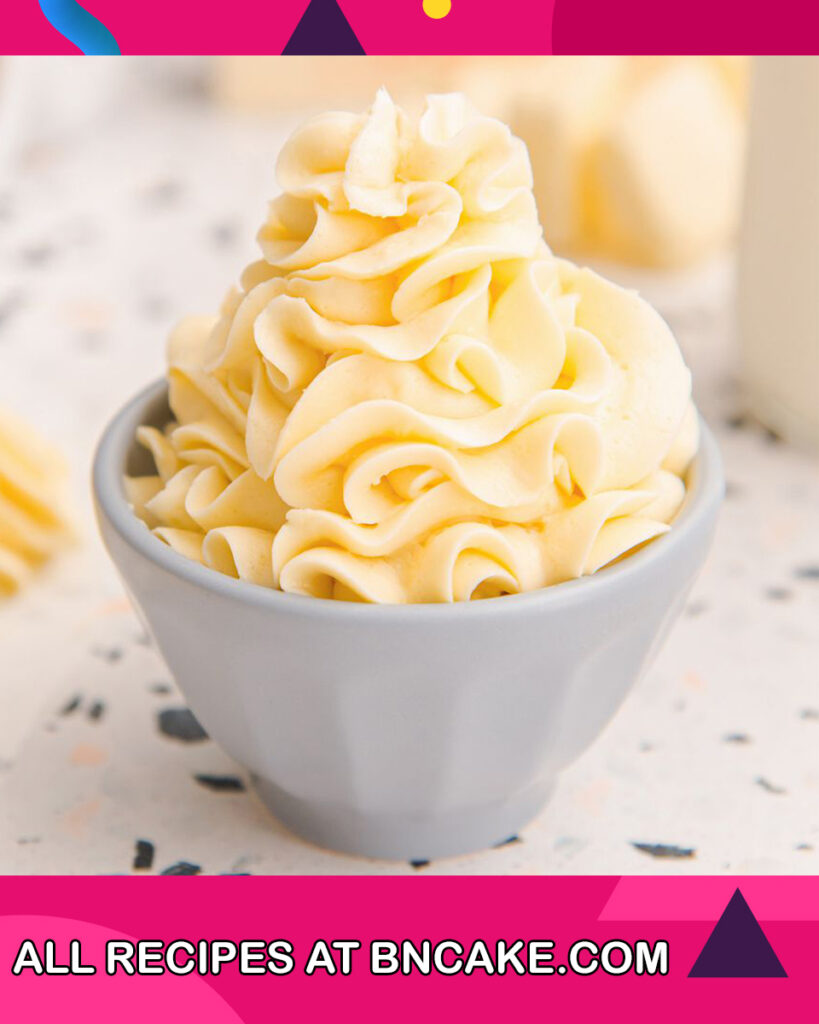
What Is German Buttercream?
German Buttercream is a type of buttercream frosting used in baking and pastry-making. It is made by combining a cooked custard base with butter, resulting in a smooth, creamy, and luxurious frosting with a delicate sweetness.
The process of making German Buttercream typically involves creating a custard by heating milk, sugar, and egg yolks until thickened. Once the custard cools down, softened butter is added, and the mixture is whipped until light and fluffy. The incorporation of butter gives the buttercream its characteristic richness and flavor.
What sets German Buttercream apart from other types of buttercream, like American or Swiss Meringue, is its custard-based foundation. This gives it a unique taste and texture, and it tends to be less sweet than some other buttercreams. Due to its versatility and ability to hold its shape well, German Buttercream is often used to frost cakes, cupcakes, and pastries, as well as fillings for various desserts.
It’s worth noting that there are different variations of German Buttercream recipes, but the basic concept of combining custard and butter remains consistent across them all. The result is a delightful frosting that can add an extra layer of deliciousness to any baked treat.
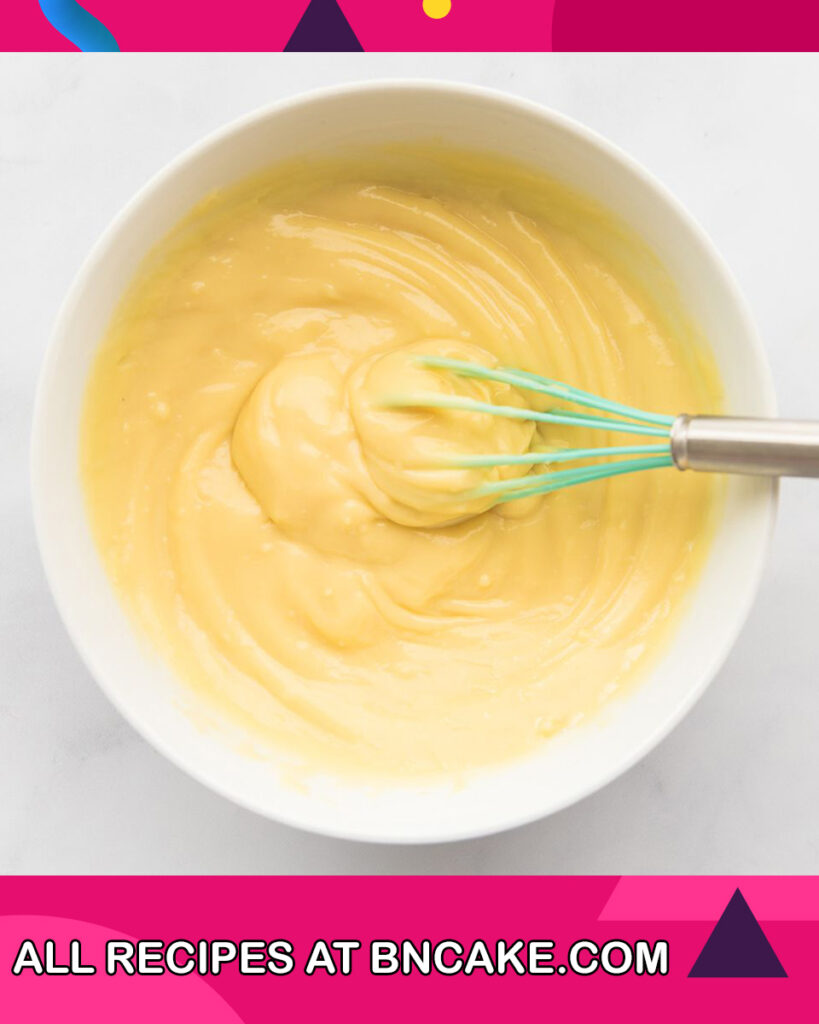
Why You Will Love German Buttercream Recipe?
- Rich and Creamy Flavor: German Buttercream is incredibly luxurious and has a delightful buttery flavor that pairs perfectly with various cakes and pastries. The custard base adds a subtle richness, making it a delectable choice for those who appreciate a more sophisticated taste.
- Smooth and Velvety Texture: The combination of custard and butter creates a velvety smooth texture that is incredibly satisfying to the palate. It spreads easily, making it a dream to work with when frosting cakes or filling pastries.
- Versatility: German Buttercream is highly versatile, making it suitable for a wide range of desserts. Whether you want to frost a layer cake, decorate cupcakes, or fill cream puffs and eclairs, this buttercream can do it all.
- Less Sweet: If you prefer frosting that isn’t overly sweet, German Buttercream is an excellent choice. The custard base provides a balanced sweetness, allowing the natural flavors of your baked goods to shine through.
- Stability: German Buttercream holds its shape well, making it ideal for creating intricate decorations and piped designs. It’s a reliable choice for achieving professional-looking cakes and desserts.
- Homemade Goodness: Making German Buttercream from scratch gives you the satisfaction of creating something delicious and special. It’s a rewarding process that allows you to customize the flavors to your liking.
- Appreciated by All Ages: German Buttercream appeals to a wide range of tastes, from kids to adults. Its smooth and creamy texture is adored by everyone, making it a crowd-pleaser at any gathering or celebration.
- Endless Flavor Variations: While the classic version of German Buttercream is wonderful on its own, you can easily infuse it with various flavors. Add extracts like vanilla, almond, or citrus, or incorporate melted chocolate, fruit puree, or coffee for a delightful twist.
- Freezes Well: If you have any leftovers, German Buttercream freezes remarkably well. Simply store it in an airtight container, and it can be thawed and rewhipped for future use.
In conclusion, German Buttercream is a truly delightful frosting that enhances any dessert it graces. Its rich flavor, smooth texture, and versatility make it a favorite among bakers and dessert enthusiasts alike. Whether you’re a seasoned baker or a novice, trying out this recipe will undoubtedly add a touch of gourmet goodness to your homemade treats.
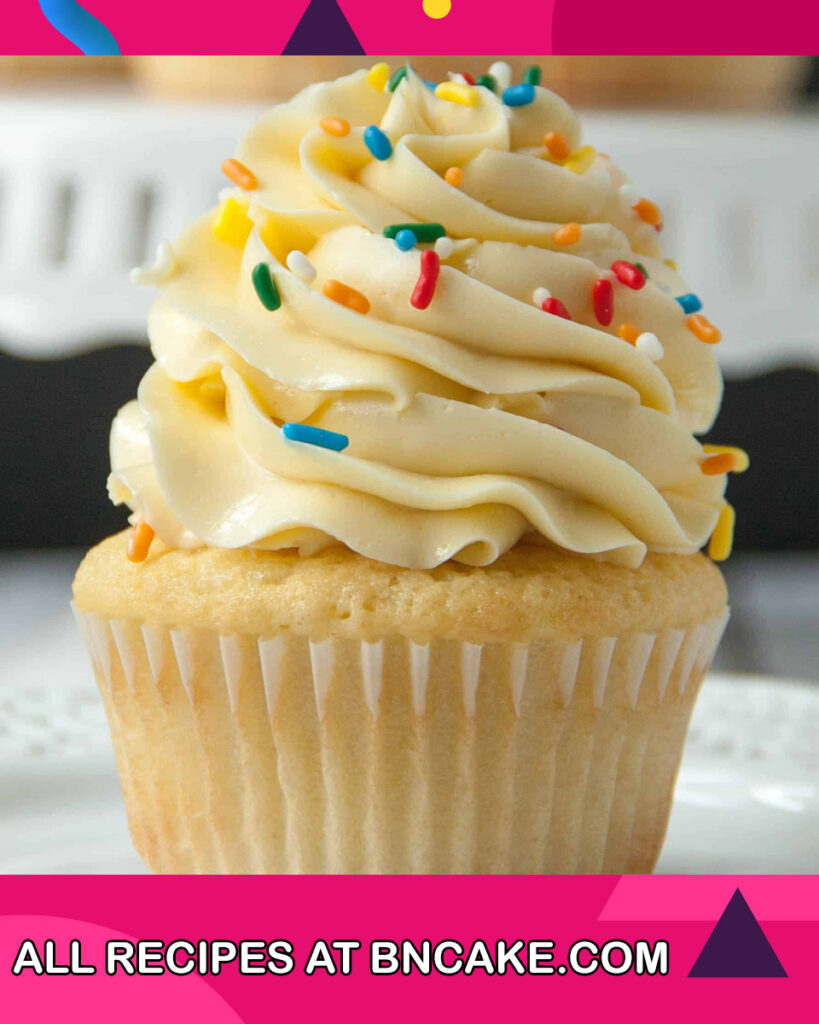
Ingredients For German Buttercream
- 2 cups (480ml) whole milk
- 1/2 cup (100g) granulated sugar
- 4 large egg yolks
- 1/4 cup (30g) cornstarch
- 1 teaspoon pure vanilla extract
- 1 cup (226g) unsalted butter, softened at room temperature
- Pinch of salt
How To Make German Buttercream
- Prepare the Custard Base:
- In a medium saucepan, heat the whole milk over medium heat until it starts to steam. Do not let it come to a boil.
- Whisk the Egg Yolks and Sugar:
- In a separate bowl, whisk together the egg yolks and granulated sugar until the mixture becomes pale and slightly thick.
- Temper the Eggs:
- Slowly pour about half of the steaming milk into the egg yolk mixture while whisking continuously. This process, known as tempering, prevents the eggs from scrambling when combined with the hot milk.
- Thicken the Custard:
- Pour the tempered egg yolk mixture back into the saucepan with the remaining milk. Cook over medium heat, stirring constantly with a wooden spoon or whisk, until the mixture thickens and coats the back of the spoon. This should take around 2-3 minutes.
- Add Cornstarch:
- Remove the saucepan from the heat and whisk in the cornstarch until the custard is smooth and well combined.
- Add Vanilla and Salt:
- Stir in the pure vanilla extract and a pinch of salt to enhance the flavors.
- Cool the Custard:
- Transfer the custard to a clean bowl and cover it with plastic wrap, making sure the plastic touches the surface of the custard to prevent a skin from forming. Allow the custard to cool to room temperature.
- Cream the Butter:
- In a separate large mixing bowl, beat the softened butter with an electric mixer on medium speed until light and fluffy. This usually takes about 2-3 minutes.
- Incorporate the Custard:
- Gradually add the cooled custard to the whipped butter, about 2 tablespoons at a time, beating well after each addition.
- Whip Until Smooth:
- Continue beating the mixture until all the custard is fully incorporated, and the buttercream becomes smooth and creamy.
Now your luscious German Buttercream is ready to be used to frost cakes, cupcakes, or fill pastries. It’s a delightful addition to any dessert, and you can store any leftovers in the refrigerator for up to a week or freeze it for future use. Enjoy the rich and velvety goodness of German Buttercream in your homemade treats!

How To Serve German Buttercream
German Buttercream is a versatile and delicious frosting that can be served in various ways. Here are some delightful ways to enjoy and serve German Buttercream:
- Frosting for Cakes: German Buttercream is perfect for frosting layer cakes, sheet cakes, and bundt cakes. Spread a generous layer of the buttercream between cake layers and on the top and sides for a smooth and luscious finish. You can also create beautiful swirls and patterns using a piping bag for an elegant presentation.
- Cupcake Frosting: Pipe or spread German Buttercream on top of cupcakes for a delectable and creamy topping. Decorate with sprinkles, edible flowers, or chocolate shavings for an eye-catching display.
- Fillings for Pastries: Use German Buttercream as a filling for cream puffs, éclairs, and other pastries. Simply pipe or spoon the buttercream into the pastries for a delightful and flavorful center.
- Macaron Filling: Sandwich two macaron shells together with a dollop of German Buttercream for an indulgent macaron treat.
- Filling for Layered Desserts: Layer German Buttercream with cake, cookies, or fruit to create a delicious and visually appealing trifle or layered dessert.
- Cake Roll Filling: Spread German Buttercream onto a sponge cake or jelly roll before rolling it up to create a delightful and creamy cake roll.
- Cupcake Shots: Create “cupcake shots” by layering German Buttercream with cake crumbs or cookie crumbs in small shot glasses for a fun and unique dessert presentation.
- Dipping Sauce: Serve German Buttercream as a dipping sauce for fresh fruits, cookies, or even churros for a sweet and indulgent treat.
- Dessert Garnish: Dollop a spoonful of German Buttercream on top of desserts like pies, tarts, or fruit crisps for an extra touch of decadence.
- Cookie Sandwiches: Spread German Buttercream between two cookies to make delicious and creamy cookie sandwiches.
Remember to store any leftover German Buttercream in the refrigerator if you don’t use it immediately. Before serving, let it come to room temperature and give it a quick whip with a mixer to restore its smooth texture.
No matter how you choose to serve it, German Buttercream is sure to delight with its rich flavor and velvety texture. Enjoy this scrumptious frosting in various desserts and make your sweet treats even more irresistible!
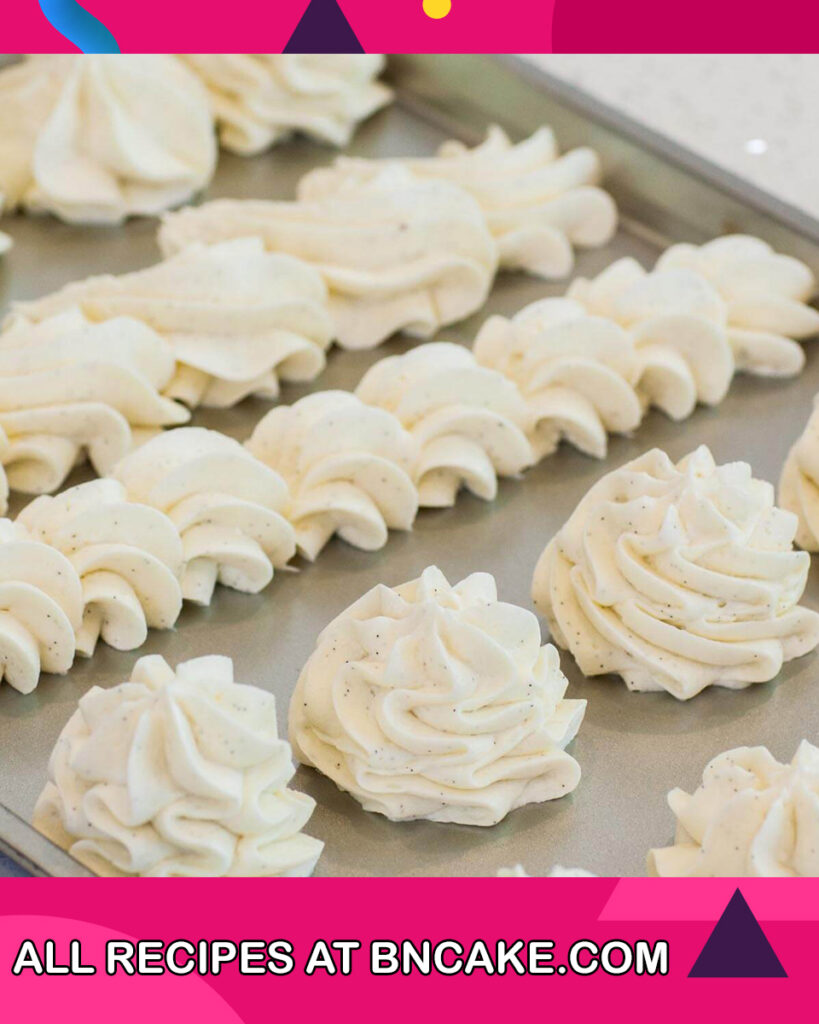
How To Store German Buttercream
To preserve the freshness and quality of German Buttercream, it’s essential to store it properly. Here are the steps to store German Buttercream:
- Refrigeration: If you’re not using the buttercream immediately, store it in an airtight container. Make sure the container is clean and completely dry before adding the buttercream. Seal the container tightly to prevent air from getting in, as exposure to air can cause the buttercream to develop off-flavors or dry out.
- Labeling: If you have multiple containers or batches of buttercream, label each container with the date of preparation. This way, you can keep track of its freshness and avoid using it beyond its ideal storage time.
- Refrigerate Properly: Place the airtight container in the refrigerator. German Buttercream can typically be refrigerated for up to a week without significant changes in taste and texture.
- Softening Before Use: When you’re ready to use the buttercream again, remove it from the refrigerator and let it come to room temperature. This may take some time, depending on the ambient temperature. To speed up the softening process, you can place the container in a bowl of warm water or microwave it in short intervals at low power.
- Re-Whipping (Optional): After the buttercream has softened, give it a quick re-whip with an electric mixer to restore its smooth and creamy texture. This step is optional, but it can help to ensure a smooth and easy-to-spread consistency.
- Freezing (Optional): If you have more buttercream than you can use within a week or want to save some for later, you can freeze it. Transfer the buttercream to a freezer-safe container, ensuring it is airtight to prevent freezer burn. The frozen buttercream can be stored for up to three months.
- Thawing Frozen Buttercream: When you’re ready to use the frozen buttercream, move it from the freezer to the refrigerator and allow it to thaw overnight. Once thawed, follow the same steps for softening and re-whipping as mentioned above.
Keep in mind that while German Buttercream can be stored, it is generally best enjoyed fresh. Over time, the texture and taste may change slightly, but proper storage helps to maintain its quality and deliciousness.
You might also like these recipes
- American Buttercream Recipe
- Perfect Swiss Meringue Buttercream
- Italian Meringue Buttercream
- Peanut Butter Buttercream
- Chocolate American Buttercream
Tips And Tricks For German Buttercream
Here are some helpful tips and tricks to ensure success when making and working with German Buttercream:
- Use Room Temperature Ingredients: To achieve a smooth and creamy buttercream, make sure both the softened butter and the custard are at room temperature. Cold ingredients can lead to lumps and a less desirable texture.
- Whip the Butter Well: When creaming the butter, beat it until it becomes light and fluffy. This step ensures a smooth base for incorporating the custard.
- Temper the Eggs Carefully: When adding the hot milk to the egg yolk mixture, do it slowly while whisking continuously to prevent the eggs from scrambling.
- Smooth Custard: Make sure to cook the custard until it thickens and coats the back of a spoon. A smooth custard ensures a silky buttercream without graininess.
- Cool Custard Completely: Allow the custard to cool to room temperature before adding it to the whipped butter. Warm custard can cause the butter to melt and lead to a runny buttercream.
- Refrigerate if Necessary: If the buttercream becomes too soft during mixing, you can refrigerate it for about 15-30 minutes to firm up slightly before continuing to whip.
- Avoid Overmixing: Once the custard and butter are combined, avoid overmixing the buttercream. Overmixing can lead to a greasy or curdled texture.
- Add Flavor Variations: German Buttercream is very versatile, and you can experiment with different flavorings like extracts (vanilla, almond, etc.), melted chocolate, fruit purees, or coffee to create unique variations.
- Consistency Adjustments: If the buttercream is too stiff, you can add a tablespoon of milk or cream at a time and whip until the desired consistency is reached. On the other hand, if it’s too soft, add a little more softened butter and whip until it firms up.
- Storage Tips: Store any leftover buttercream properly in an airtight container in the refrigerator. Allow it to come to room temperature and re-whip it for a smooth texture before using.
- Freezing Tips: If you plan to freeze the buttercream, ensure it’s in a freezer-safe, airtight container to avoid freezer burn. Thaw it in the refrigerator and re-whip as needed before use.
- Piping Techniques: German Buttercream is excellent for piping. Use a piping bag with your desired tip to create beautiful decorations and patterns on cakes and cupcakes.
By following these tips and tricks, you’ll be able to create a delightful and velvety German Buttercream that will elevate your desserts to a whole new level of deliciousness.
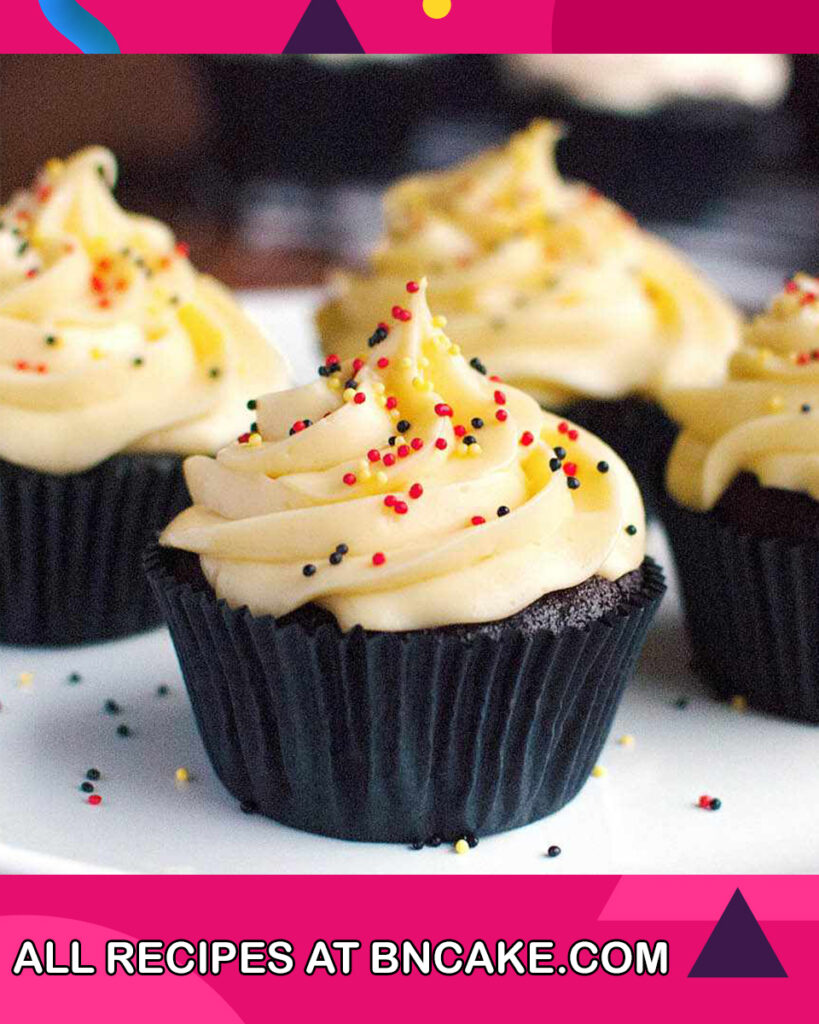
FAQs And Troubleshooting
FAQs about German Buttercream:
- Can I use salted butter for German Buttercream?
It is best to use unsalted butter to have better control over the saltiness of the buttercream. If you only have salted butter, reduce or omit the pinch of salt in the recipe. - Can I use a different milk for the custard?
Whole milk provides the best results for a rich and creamy custard. You can try using other types of milk, but the texture and flavor may vary. - Can I make German Buttercream ahead of time?
Yes, you can make German Buttercream ahead of time and store it in the refrigerator for up to a week or freeze it for up to three months. Just ensure it is properly stored in an airtight container. - Why is my German Buttercream too runny?
If your buttercream is too runny, it could be due to using warm custard or softened butter that is too soft. Refrigerate the mixture for a while to firm it up, then re-whip to the desired consistency. - Why is my German Buttercream grainy?
Grainy buttercream may result from insufficiently whipped butter or improperly incorporated custard. Make sure both the butter and custard are at room temperature, and beat until smooth. - Can I color German Buttercream?
Yes, you can color German Buttercream using gel or powdered food coloring. Add a small amount at a time and mix until the desired color is achieved.
Troubleshooting German Buttercream:
- Curdled Buttercream: If your buttercream appears curdled after mixing, it might be due to using ingredients at drastically different temperatures. Refrigerate the mixture for a short time, then re-whip it until it becomes smooth.
- Buttercream Too Soft: If your buttercream is too soft, place it in the refrigerator for a few minutes to firm up slightly. Avoid adding extra butter, as it may alter the flavor and texture.
- Buttercream Too Firm: If your buttercream is too stiff, you can add a tablespoon of milk or cream at a time and whip until it reaches the desired consistency.
- Buttercream Separated: If the buttercream separates and won’t come together, it could be due to ingredients being too cold or too warm. Allow the custard and butter to reach room temperature, then re-whip the mixture.
- Grainy Texture: A grainy texture can result from underwhipping the butter or not incorporating the custard fully. Make sure to whip the butter until light and fluffy and blend the custard thoroughly.
By following the FAQs and troubleshooting tips, you can troubleshoot common issues and create a smooth and delicious German Buttercream for your baking endeavors. Enjoy this luxurious frosting in your favorite desserts!
Nutrition Information
Below is an approximate nutritional breakdown based on the classic German Buttercream recipe provided earlier, using standard ingredients:
Calories: 180, Total Fat: 13g, Saturated Fat: 8g, Trans Fat: 0g, Cholesterol: 70mg, Sodium: 10mg, Total Carbohydrates: 14g, Dietary Fiber: 0g, Sugars: 11g, Protein: 1g
Note: The values provided are approximate and may vary depending on the specific ingredients and brands used. It’s important to keep in mind that German Buttercream is a decadent and rich frosting, so it should be enjoyed in moderation as part of a balanced diet.
Additionally, it’s worth noting that German Buttercream contains eggs and dairy (butter and milk), so individuals with allergies or dietary restrictions should take these ingredients into consideration. If you have specific dietary concerns, it’s always best to consult a registered dietitian or healthcare professional for personalized advice.
